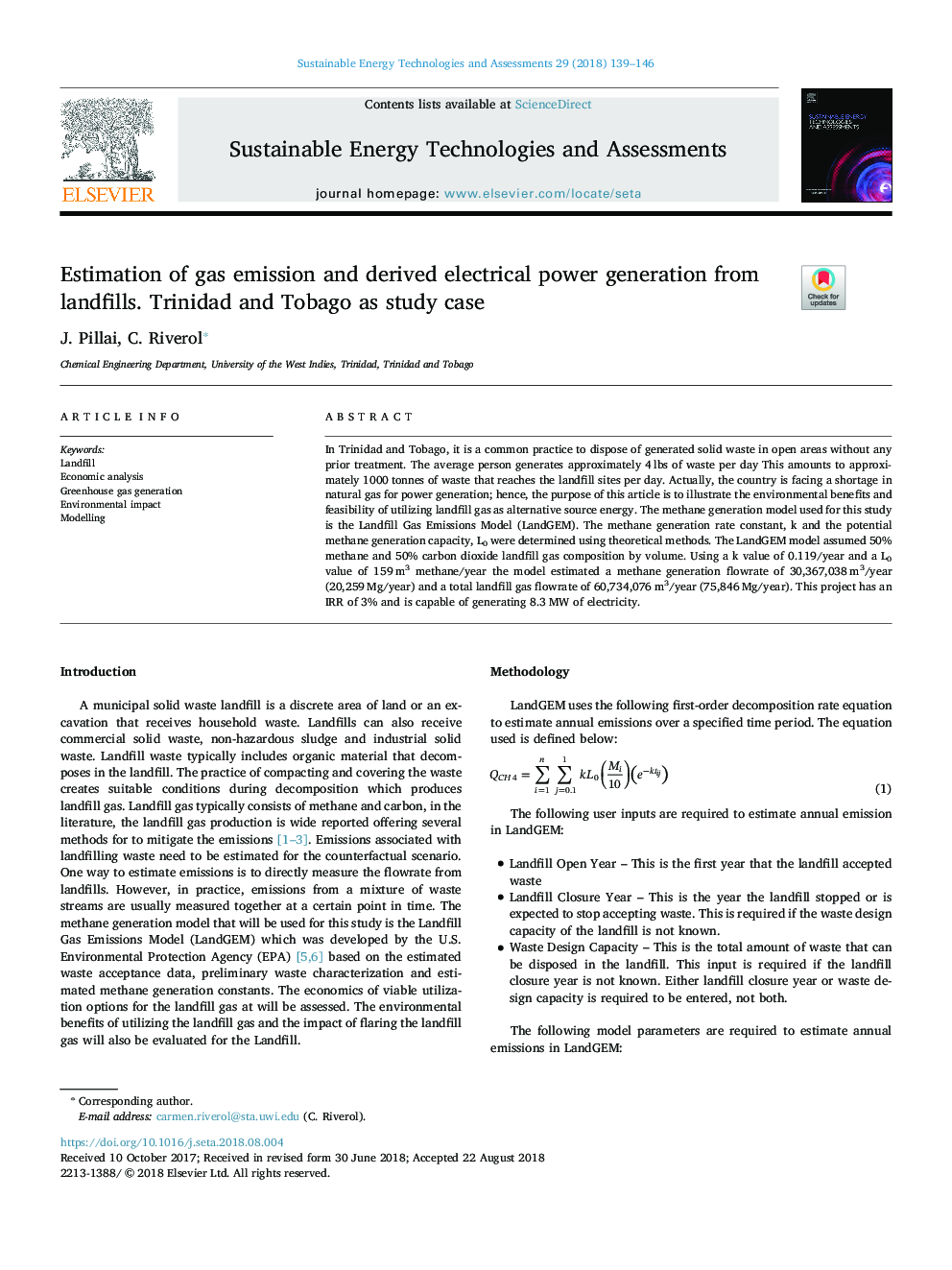| Article ID | Journal | Published Year | Pages | File Type |
|---|---|---|---|---|
| 11007478 | Sustainable Energy Technologies and Assessments | 2018 | 8 Pages |
Abstract
In Trinidad and Tobago, it is a common practice to dispose of generated solid waste in open areas without any prior treatment. The average person generates approximately 4â¯lbs of waste per day This amounts to approximately 1000â¯tonnes of waste that reaches the landfill sites per day. Actually, the country is facing a shortage in natural gas for power generation; hence, the purpose of this article is to illustrate the environmental benefits and feasibility of utilizing landfill gas as alternative source energy. The methane generation model used for this study is the Landfill Gas Emissions Model (LandGEM). The methane generation rate constant, k and the potential methane generation capacity, L0 were determined using theoretical methods. The LandGEM model assumed 50% methane and 50% carbon dioxide landfill gas composition by volume. Using a k value of 0.119/year and a L0 value of 159â¯m3 methane/year the model estimated a methane generation flowrate of 30,367,038â¯m3/year (20,259â¯Mg/year) and a total landfill gas flowrate of 60,734,076â¯m3/year (75,846â¯Mg/year). This project has an IRR of 3% and is capable of generating 8.3â¯MW of electricity.
Related Topics
Physical Sciences and Engineering
Energy
Energy Engineering and Power Technology
Authors
J. Pillai, C. Riverol,
